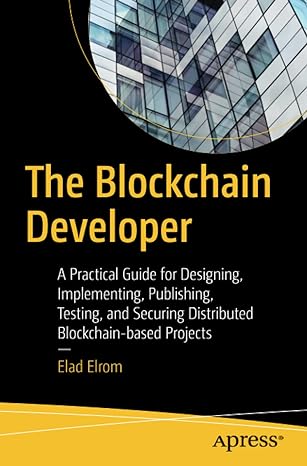Question
Tortuga Tarpon Classic The company has two separate research teams working on the project and they develop two distinctly different fishing combinations. The two rod
Tortuga Tarpon Classic
The company has two separate research teams working on the project and they develop two distinctly different fishing combinations. The two rod and reel combinations are test marketed with guides and past tournament champions and demand forecasts are determined. Most fishing gear has a relatively short life due to continual product innovation. Manufacturing of the two combinations is estimated to require an upfront cost of $5 million to retool the machine shop. The process for manufacturing the two combinations differ and ongoing variable costs are not the same. The net cash flows for the entire ten year expected life of the product is shown in Figure 1 as Project A and Project B (all figures are $thousands of net cash flow).
Project A focuses on hand tooled fishing equipment which results in a more labor intensive process, but also allows for personalized features for customers. The price charged for customization offset the slower hand tooling process to generate substantial net cash flows. Part of the upfront $5 million includes the costs of training more machinists in the art of hand tooling, which is similar to watch making but with a few less moving parts. Project A is anticipated to generate lower cash flows in the early years due to the length of time required to get machinists who are adept at hand tooling to customer specifications. In fact, during the first year there will be continued expenses to attain these skills which causes year one net cash flows to be negative. Over time the cash flows increase as more machinists gain proficiency. The project is expected to experience lower cash flows towards the end of its life due to market saturation. Due to the quality of the reels, they are built to last and seldom fail or wear out. Technological obsolescence is certain although Tortuga will be investing cash flows into research and development to launch the next generation at the conclusion of the Tortuga Tarpon Classic life cycle.
Project B employs a mechanized approach to large scale production of standardized equipment. Although the approach does not allow for personalization, it does allow Tortuga to build its inventory quickly and capture positive net cash flows immediately. The upfront expense is almost completely devoted to tooling equipment procurement and the number of units produced will be much higher and at lower price points than the approach of Project A. At the end of both projects life it is assumed that there will be zero salvage value as the pace of innovation will require a complete re-tooling for the next generation and the useful life of the equipment will have been fully realized.
Brooks realizes that he will need to calculate the firms cost of capital discount rate and apply this to the cash flow projections of both projects. He recalls all of the assignments he completed at university and is thankful to have been so well-prepared for this task. He gets a cup of coffee, sits down at his desk, and gets to work.
Figure 1 Project Net Cash Flows for Tortuga Fishing Equipment ($thousands)
| Year | Project A | Project B |
| 1 | -900 | 950 |
| 2 | 200 | 950 |
| 3 | 900 | 950 |
| 4 | 1800 | 950 |
| 5 | 2500 | 950 |
| 6 | 2500 | 950 |
| 7 | 1800 | 950 |
| 8 | 1200 | 950 |
| 9 | 800 | 950 |
| 10 | 200 | 950 |
What are the net present value (NPV), internal rate of return (IRR), and Payback Periods for Projects A & B? Assuming a WACC of 6.54%
Step by Step Solution
There are 3 Steps involved in it
Step: 1

Get Instant Access to Expert-Tailored Solutions
See step-by-step solutions with expert insights and AI powered tools for academic success
Step: 2

Step: 3

Ace Your Homework with AI
Get the answers you need in no time with our AI-driven, step-by-step assistance
Get Started


